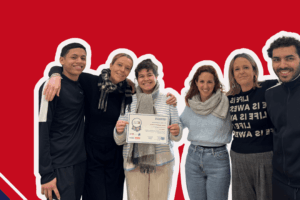
10 Common Mistakes Spanish speakers make when learning English (and How to Fix Them)
- Categories Learn English
- Date 06/06/2025
10 Common Mistakes Spanish Speakers Make When Learning English (and How to Fix Them)
Learning English as a Spanish speaker comes with its own set of challenges. Many mistakes are caused by direct translations, false friends, and grammatical differences between the two languages.
At our English school in London, we’ve helped hundreds of Spanish-speaking students overcome these obstacles. Here are the 10 most common mistakes they make — and how to avoid them.
1. Translating directly from Spanish
Literal translations rarely work, especially when it comes to age, expressions, or verb structure.
❌ Incorrect: “I have 25 years.”
✅ Correct: “I am 25 years old.”
Tip: Learn phrases as full chunks instead of word-by-word translations.
2. Confusing “do” and “make”
Both mean “hacer” in Spanish, but they’re used differently.
❌ Incorrect: “I made my homework.”
✅ Correct: “I did my homework.”
Tip: Use “do” for tasks and routines, and “make” for creating or producing something.
3. Leaving out the subject in sentences
In Spanish, the subject can often be dropped — but not in English.
❌ Incorrect: “Is raining.”
✅ Correct: “It is raining.”
Tip: English always needs a subject, even if it’s just “it” or “there.”
4. False friends (words that look similar but mean something different)
These can be very misleading!
❌ Incorrect: “Actually” to mean “currently”
✅ Correct: “Actually” = in fact / “Currently” = now
Tip: Watch out for false friends like “embarrassed” (which doesn’t mean embarazada!).
5. Pronouncing English sounds that don’t exist in Spanish
Some sounds are tricky — like “th” in think or “sh” in she.
❌ Incorrect: “Tink” instead of “think”
✅ Correct: /θɪŋk/
Tip: Practice with native pronunciation apps like YouGlish or Forvo.
6. Wrong adjective order
In English, adjectives go before the noun.
❌ Incorrect: “A house big”
✅ Correct: “A big house”
Tip: Remember: adjective + noun is the standard structure.
7. Using the wrong verb tense
Especially confusing: past simple vs present perfect.
❌ Incorrect: “I have gone to the cinema yesterday.”
✅ Correct: “I went to the cinema yesterday.”
Tip: Don’t use present perfect with specific time expressions like “yesterday.”
8. Saying “people is” instead of “people are”
“People” is plural in English — even though it feels singular in Spanish.
❌ Incorrect: “People is nice here.”
✅ Correct: “People are nice here.”
Tip: Think of “people” as meaning “they” — always use plural verbs.
9. Overusing “very”
It’s easy to rely on “very,” but it can sound repetitive and unnatural.
❌ Incorrect: “Very very good.”
✅ Correct: “Excellent” or “Fantastic”
Tip: Build a list of strong adjectives (e.g., “delicious” instead of “very good”).
10. Being afraid to make mistakes
This is the most limiting mistake of all.
❌ Incorrect: Staying silent out of fear
✅ Correct: Practice, make mistakes, and learn from them
Tip: Mistakes are part of the learning journey. The more you speak, the faster you improve.
✅ Final Thoughts
If you’re a Spanish speaker learning English — especially here in London — don’t worry. These mistakes are common, and with awareness and practice, they’re easy to fix.
Want to fast-track your English and build real confidence?
👉 Join our English courses in London and start speaking with confidence today.
Tag:english, grammar, learning, mistakes, spanish speaker
You may also like

Intensive English courses in London: Learn English quickly
2 November, 2025

Tips to learn English quickly and effectively
26 October, 2025

IELTS Exam Preparation
12 October, 2025
